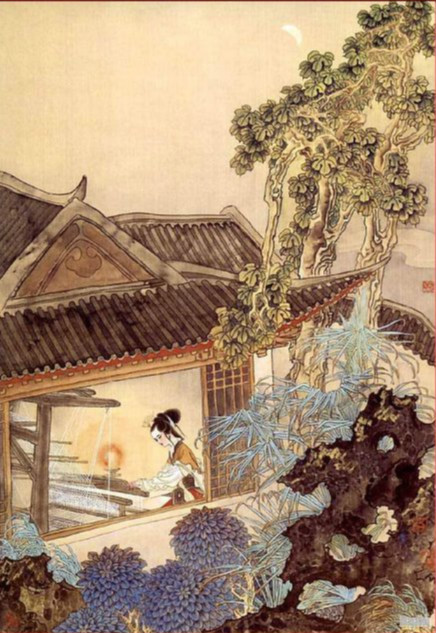Needlework represents traditional attitudes toward women

Liu Lanzhi, in the Han folk song Peacock Flies to the Southeast, is depicted as a good master of needlework. She makes a number of embroidery works to express her deep love for her husband.
Throughout Chinese history, domestic needlework skills have been passed down between mothers and daughters. Thus, needlework has become known as the “mother’s art.”
In ancient times, women were judged by society according to traditional ideas of virtue. This included their manner of speaking, appearance and needlework. Society demanded that women be equipped with perfect and flawless needlework skills instead of simple sewing and mending.
Women were pushed to integrate practicality with aesthetic functions to create elaborate embroidery works. These skills were tied to their ability to manage a household and find a good husband.
Thus these skills became a symbol of being a good wife and kind mother, and a necessary qualification for women to assist their husbands and bring up children.
This corresponds to a folk saying, “To judge a wife, see her husband’s clothes.” Historical records indicate that young girls needed to learn crocheting, weaving, embroidery, cutting and sewing at the age of 6 or 7. The heroine Liu Lanzhi in the Eastern Han Dynasty poem Peacock Flies to the Southeast was a good literary role model for these standards.
Although the tools used in needlework are just normal objects like needles, thread and scissors, a stunning work of needlework requires an exceptional amount of talent.
The most celebrated form of needlework is embroidery. China has a long history of this art form, which is divided into four provincial styles—Hunan, Sichuan, Suzhou and Guangdong embroidery. Shen Shou, a famous embroiderer in the late Qing Dynasty, was the first to bring Chinese embroidery to the world stage. Hailing from Suzhou, Jiangsu Province, Shen started to learn needlework at 7 and embroidery at 8. At the age of 16, she became a well-known embroidery master and gave her work as a present to the Qing court to celebrate the birthday of Empress Dowager Cixi. The empress was impressed by Shen’s embroidery skills and appointed her to work at the court. Shen introduced the techniques of Western photography and painting skills into Chinese embroidery, and developed new styles of embroidery.
